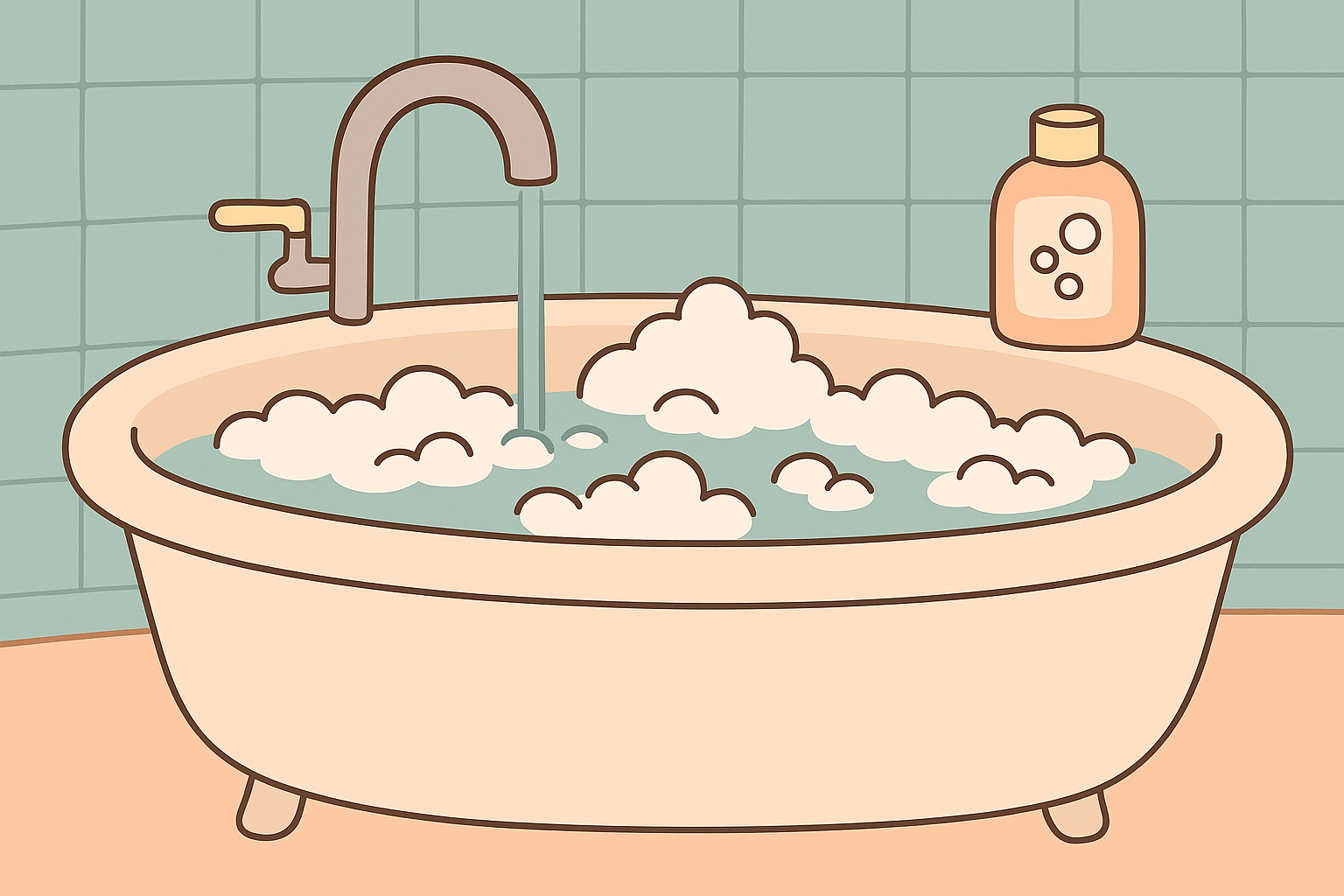The Art of the Bath: Safe, Soothing Routines
The Art of the Bath: Safe, Soothing Routines
Bath time can be one of the most joyful — or stressful — parts of the day. For some kids, it’s a splash-filled adventure; for others, it’s all tears and resistance. But with the right balance of safety, routine, and comfort, bath time can become a daily ritual that nurtures both body and mind.
Here’s how to make the tub a calm, playful, and safe space where kids learn self-care and parents find a moment of connection.
Why Bath Time Matters More Than You Think
A bath isn’t just about getting clean — it’s about winding down, bonding, and sensory learning.
Relaxation: Warm water helps calm the nervous system and ease transitions before bedtime.
Motor skills: Pouring, scooping, and scrubbing strengthen coordination.
Language and imagination: Bath toys and storytelling nurture creative play.
Most importantly, consistent routines like bath time teach children that caring for their bodies feels good — not like a chore.
Setting the Stage for Safety
Before the bubbles come out, start with safety:
Water temperature: Aim for warm but not hot. Test it with your wrist, not your hand.
Supervision: Always stay within arm’s reach. Never leave a baby or toddler unattended, even for a moment.
Slip protection: Use a non-slip mat inside the tub and a dry towel outside to prevent falls.
Faucet covers: Soft covers help prevent bumps or burns.
Storage: Keep shampoos, razors, and cleaning products out of reach.
💡 Fuzzigram tip: Set up everything (towels, pajamas, lotion) before the water starts running so you can focus entirely on your child.
The Right Tools for Tiny Bathers
Simple tools make bath time smoother and safer:
Infant tubs for early months, then a bath seat or mat for support.
Rinse cups or pitchers with smooth edges.
Washcloths or silicone scrubbers for gentle cleaning.
Soft, hooded towels for a cozy finish.
Letting kids choose their own washcloth color or toy builds excitement and a sense of control.
Making It Playful — Without Overstimulation
Play is part of the magic, but calm play keeps things peaceful. Try:
Bubble art: Use foam or bubbles to “draw” on the sides of the tub.
Floating friends: Bath-safe puppets, animals, or boats turn scrubbing into storytelling.
Songs and counting games: “How many bubbles can we pop?” encourages focus and language.
Avoid flashing lights or loud music at night — too much stimulation can make it harder for kids to relax afterward.
For Kids Who Resist the Bath
Some children fear water or dislike getting their face or hair wet.
Start with short baths and gradually add time.
Use a washcloth on the face instead of pouring water directly.
Try a visor or rinse cup to protect eyes during hair washing.
Let them wash a toy doll or puppet alongside — it turns anxiety into empathy.
Offer choices when possible (“Do you want to wash your hair first or last?”) so they feel in control.
Sensory Sensitivity and Bathing
Kids with sensory sensitivities may find baths overwhelming.
Use consistent water depth and temperature — surprises can be distressing.
Add a few drops of lavender or chamomile to soothe without overpowering.
Use soft lighting instead of bright overhead bulbs.
Consider a bath schedule at the same time daily to create predictability.
Even children who struggle with transitions can grow to love bath time when it feels predictable and calm.
After-Bath Rituals That Build Connection
How you end the bath matters just as much as how you start.
Wrap your child in a warm towel and take a brief cuddle moment.
Apply gentle lotion or baby oil to soothe dry skin.
Let them choose pajamas or bedtime story next — it reinforces independence.
These small, loving transitions signal the brain: “The day is done, it’s time to rest.” Over time, this becomes one of the strongest emotional anchors in your child’s routine.
Bath Time for Different Ages
Infants:
Short and simple. Focus on comfort and warmth. Sponge baths are fine until the umbilical cord heals.
Toddlers:
Add play and choice, but keep supervision constant. Toddlers love to pour, scoop, and “wash” their toys.
Preschoolers:
Encourage independence. Let them wash their own hands or arms with guidance. Turn it into a mini lesson in hygiene: “We clean between our fingers and toes to stay healthy!”
Early school-age (5–7):
You can start giving them privacy, but stay close. Teach them about rinsing thoroughly, brushing hair, and tidying up the bathroom.
What to Avoid
Even well-meaning habits can cause issues:
Avoid bubble baths every night — they can dry sensitive skin.
Don’t let kids sit too long in soapy water (especially for girls — it can irritate).
Skip harsh soaps and fragrances.
Avoid distractions like tablets or loud toys — they overstimulate and reduce awareness of safety.
Building Healthy Hygiene Mindsets
When kids see that bath time is gentle, fun, and consistent, it becomes an act of care instead of obligation. You’re teaching lifelong lessons:
My body deserves care.
Clean feels comfortable.
I can manage my own routine.
Those lessons carry into every other area — from brushing teeth to getting ready for school.
Bath time doesn’t have to be a race to bedtime or a daily battle. With a few tweaks in structure and tone, it can become a cherished ritual — one that calms the body, builds trust, and fosters independence.
Every splash, giggle, and towel wrap teaches your child that self-care is joyful, safe, and loving. And that’s the heart of a healthy routine — both for kids and parents.
This content is for educational purposes and is not a substitute for professional medical or psychological advice.
Popular Parenting Articles


